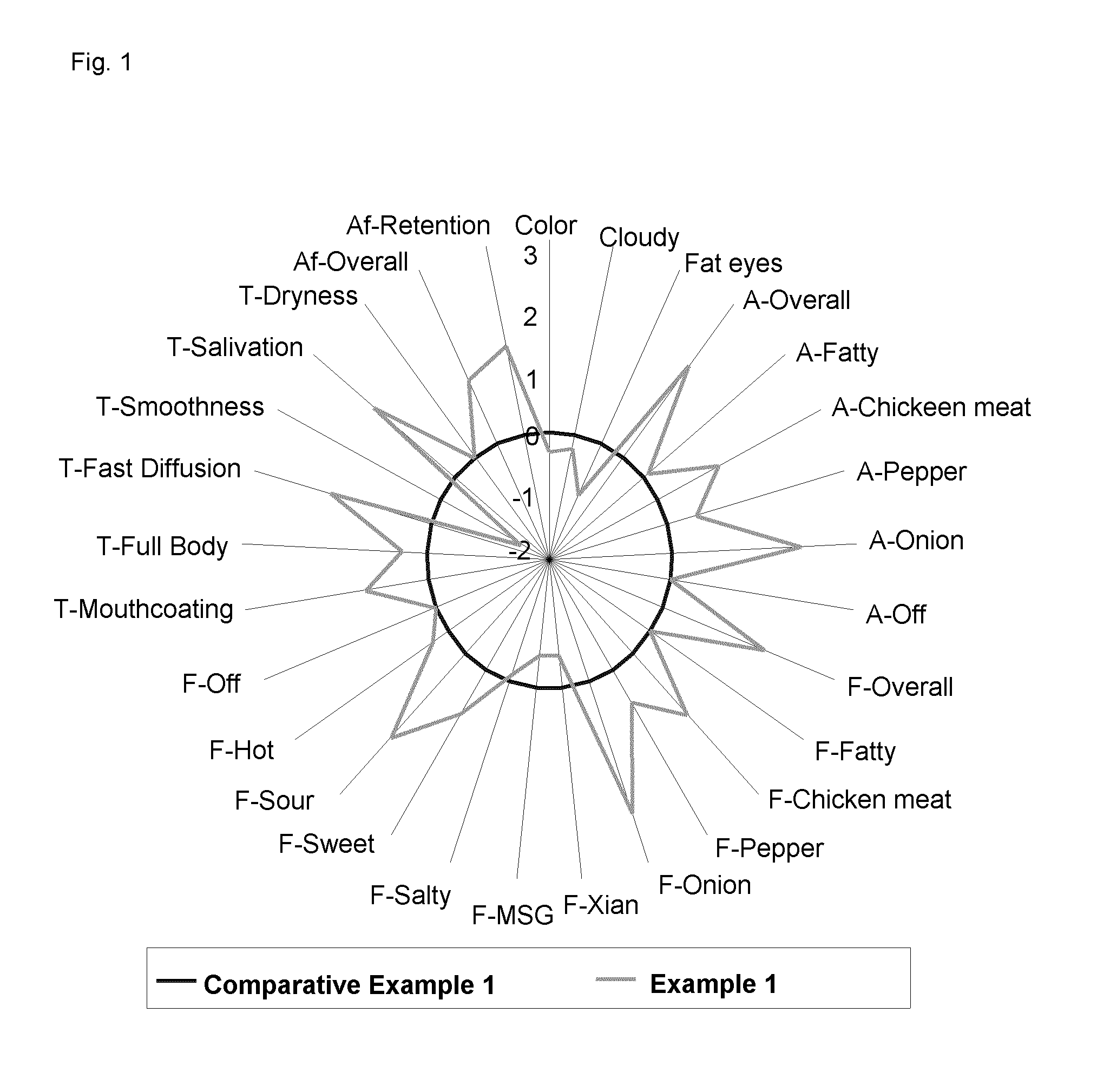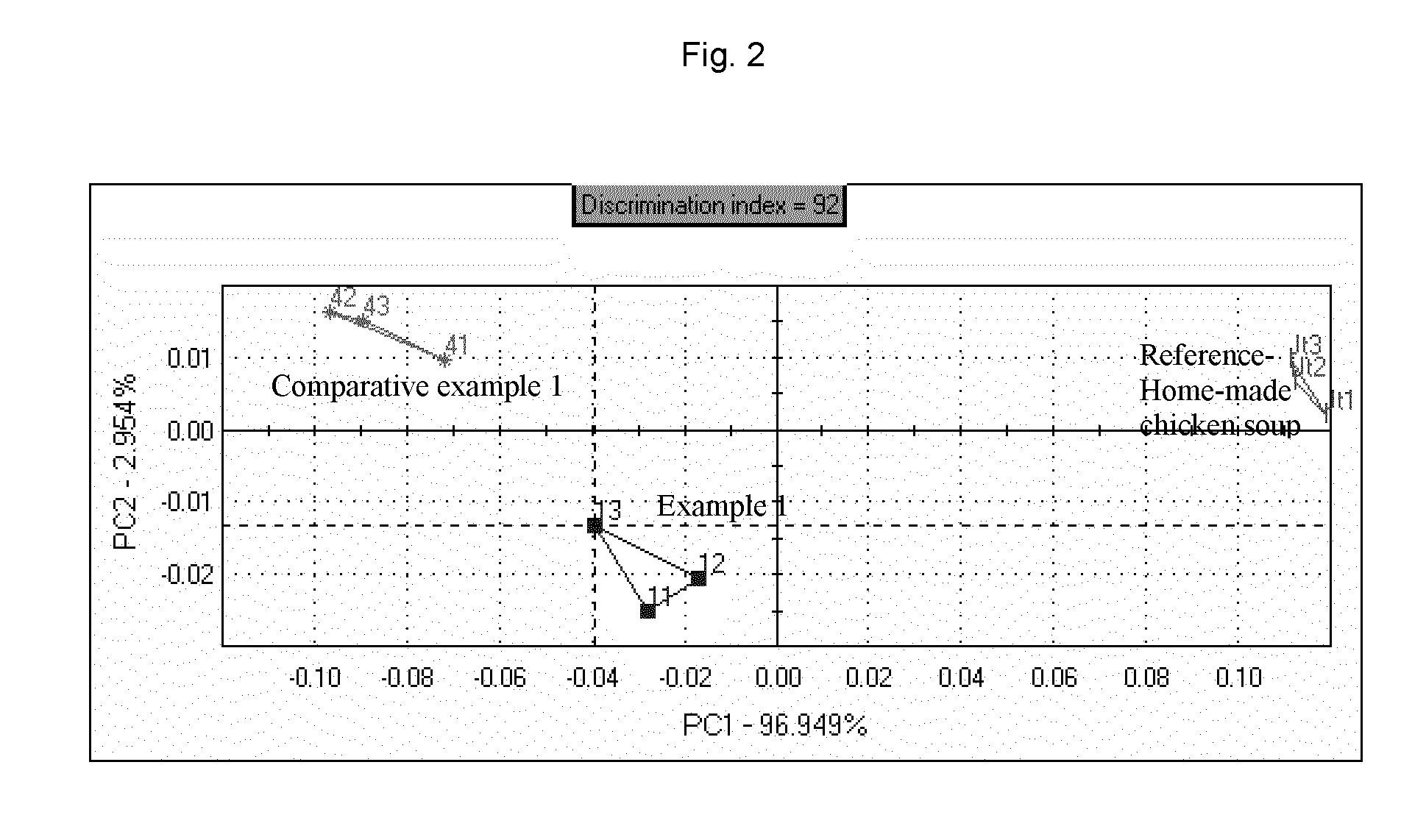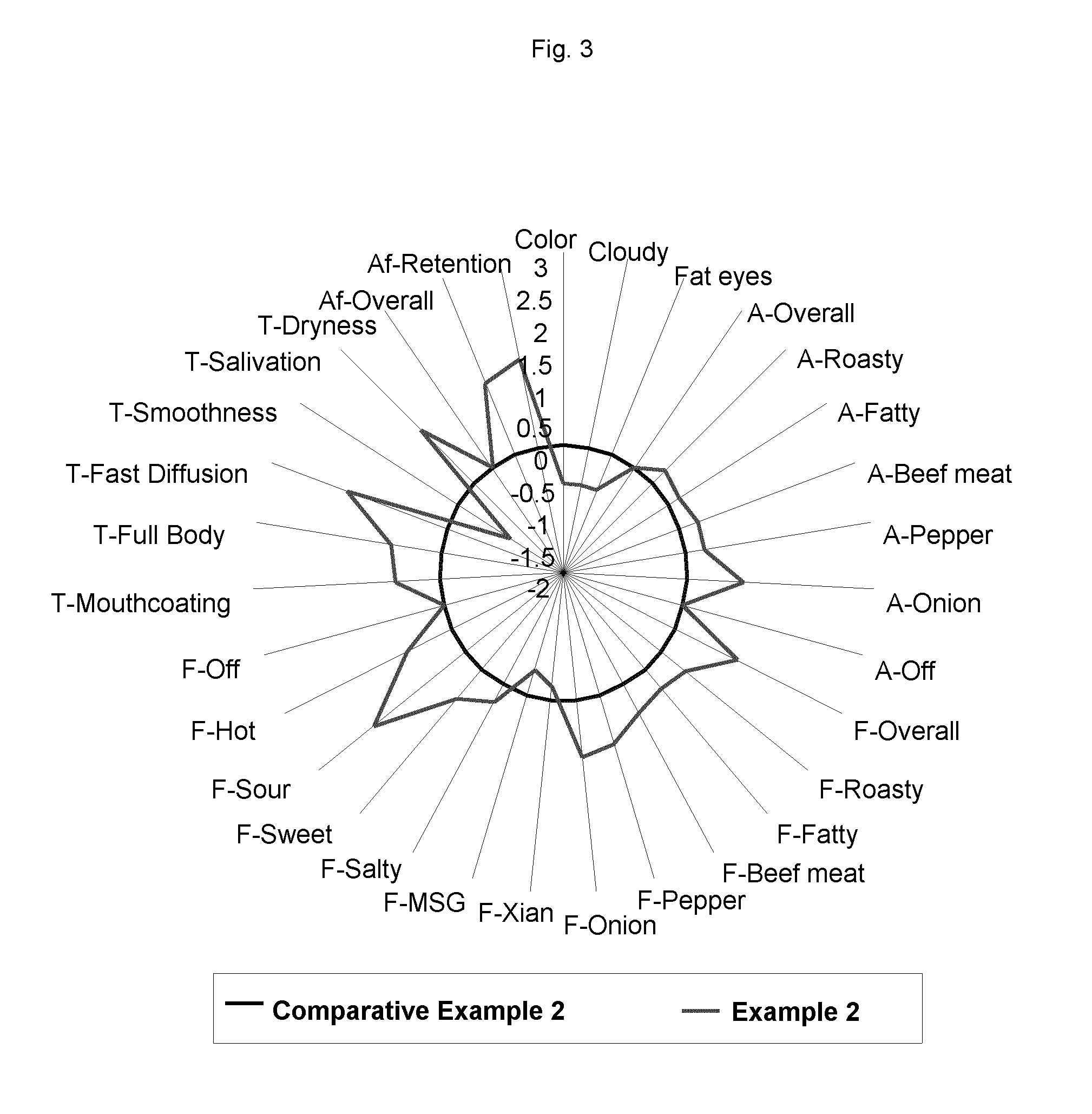Concentrated flavour base product
a flavour base and concentrate technology, applied in the field of concentrate flavour base products, can solve the problems of low yield of odorants and tastiers etc. in the flavouring product, low flavour strength, and insufficient strength of flavour generated in such a way to be used as flavourings for other food preparations
- Summary
- Abstract
- Description
- Claims
- Application Information
AI Technical Summary
Benefits of technology
Problems solved by technology
Method used
Image
Examples
example 1
Chicken Bouillon Reacted Base
[0070]Raw chicken was minced, followed by colloid milling and then the milled chicken paste was collected. To 20 kg milled chicken paste was added 4 kg salt, 10 kg sugar and 1 kg xylose and the subsequent mixture subjected to a thermal reaction by heating at 60° C. for 80 minutes. A concentrated base / intermediate product was obtained. 28 kg water, 10 kg sugar and 1 kg modified starch were added to this concentrated chicken flavour base, and the mixture was pasteurised by heating at 82° C. for 10 min. The final product is a chicken bouillon reacted base.
example 2
Beef Flavour Seasoning
[0072]Raw beef was minced and colloid milled. 1 kg salt, 0.8 kg dextrose, 3 kg fresh carrot puree, 0.5 kg fresh garlic puree and 3 kg fresh onion puree was added to 3.5 kg milled beef paste and the mixture subjected to a thermal reaction by heating at 80° C. for 90 minutes. A concentrated base / intermediate product was obtained. 70 kg MSG and 51 kg salt was added to the concentrated beef base and the mixture milled for 0.5 min under 5° C. to obtain a paste. The mixture was then granulated to a granule size of 2 mm, and fluidized bed dried for 0.5 min using hot air at 105° C. The beef flavoured seasoning granulated product had a moisture content of 2.5%.
example 3
Oyster Sauce
[0074]Fresh oyster meat was minced followed by colloid milling. To 9 kg milled oyster paste was added 10 kg water, 5 kg salt and 5 kg sugar and the mixture subjected to a thermal reaction by heating at 95° C. for 50 minutes. A concentrated base / intermediate product was obtained. This concentrated flavour base was mixed with 4 kg starch, 7 kg sugar and 33 kg water, and then pasteurised by heating at 85° C. for 10 min to obtain an oyster sauce.
[0075]It was found that oyster sauce produced this way was preferred over ordinary commercial products in a consumer test. Of the 19 consumers in the test, 80% preferred the oyster sauce of Example 3. Reasons for preference and the number of testers who preferred the specific product per each reason are summarized in Table 1.
TABLE 1Comparison between Example 3 product and conventional productNumber of TestersReasonConventional productExample 3 ProductMore oyster aroma14Make “cai thia” shining—3Nicer color23Better spices aroma—2Enhanc...
PUM
 Login to View More
Login to View More Abstract
Description
Claims
Application Information
 Login to View More
Login to View More - R&D
- Intellectual Property
- Life Sciences
- Materials
- Tech Scout
- Unparalleled Data Quality
- Higher Quality Content
- 60% Fewer Hallucinations
Browse by: Latest US Patents, China's latest patents, Technical Efficacy Thesaurus, Application Domain, Technology Topic, Popular Technical Reports.
© 2025 PatSnap. All rights reserved.Legal|Privacy policy|Modern Slavery Act Transparency Statement|Sitemap|About US| Contact US: help@patsnap.com



